Randy Carlyle’s inevitable firing brought about as crazy a day in Leafs land as any in recent memory.
- Phil Kessel and Dave Feschuk arguing, with Kessel calling Feschuk disrespectful and an idiot.
- Ex-coach Ron Wilson suddenly showing up to pour gasoline on the team, light a match, and walk away.
- Bill Watters thought of every negative thing he could say about Kessel and Phaneuf, and then said them on air.
- At some point there was a Dave Nonis press conference where, as has become the norm, not much of substance was really said. He then was not allowed to go on afternoon radio shows, admittedly a little strange.
- The Leafs actually ended the night still technically in a playoff spot.
But, at the end of the day, nobody really cares about any of that stuff. There is really only one thing that matters: How will this firing change things moving forward?
In Yahoo’s! dissection of the Carlyle dismissal, Nick Cotsonika had an interesting note on management:
[quote_box_center]“The Leafs also didn’t like how Carlyle used some players. The Leafs got rid of enforcers to become more of a four-line team, but Carlyle didn’t use his fourth line enough, as if he still had Colton Orr or Frazer McLaren. The Leafs acquired Roman Polak to play a role, but not the role of No. 1 defenseman.”[/quote_box_center]
Immediately, young call-ups and fourth liners stand to benefit. Players such as Richard Panik, who has 7 goals in 35 games (albeit shooting over 24%) while averaging 8:34 a night, or Josh Leivo, who got called up for 8 games and played less than 8 minutes a game, should stand to benefit.
In Anaheim, two younger players who Carlyle buried benefited almost immediately from his firing—Nick Bonino and Matt Beleskey. Nick Bonino had 2 points in 37 games under Carlyle, and was stuck in the AHL in his age 22 and age 23 seasons besides a 26-game call up where he played under 10 minutes per game. Since Carlyle was fired, he has 101 points in 189 games and his ice time has trended up, starting at 12:29 in year one without Carlyle to his current 17 minutes per game after being a major piece in the Ryan Kesler deal.
Matt Beleskey was slightly more successful under Carlyle with 28 points in 116 games (.24PPG), but since Bruce Boudreau took over the Ducks he has 74 in 189 (.39PPG). Beleskey played 60 games under Carlyle and then found himself in the minors the following season, although most research indicates that is due to a concussion. The following season in which Carlyle was fired, however, Beleskey had 0 points in the 19 games Carlyle used him before he was dismissed.
Greg McKegg is but the latest, and turns out the last, reminder of the Carlyle call-ups who got put on the fourth line and not given an opportunity to play meaningful minutes to see what he can actually do. Depending on the new coach, it could mean opportunity for really anyone down the line-up. Carlyle was somewhat set in his ways of keeping the top line together, at best switching it up for a period and then instantly reverting back to it at the first sign of danger, but perhaps now we’ll see second and third liners under Carlyle get greater opportunities. Lo and behold, Sam Carrick has already been recalled.
Since Horachek is going to be mainly calling the shots for now, here is a potential indicator of what is to come based on his short tenure in Florida from the Sun Sentinel:
[quote_box_center]2. Under Horachek, forward Scottie Upshall, who was buried in Dineen’s doghouse because of injuries and an apparent personality conflict, thrived with a career-best 37 points while evolving as a team leader. Horachek’s handling of castoff defenseman Tom Gilbert (25 assists) and oft-injured forward Jesse Winchester (career-high 9 goals) also paid off in resurgent seasons. Veteran forward Sean Bergenheim, who was out for more than a year with injuries, finished strong with 16 goals in 62 games.
3. Under Horachek the Panthers were instantly more organized skating in and out of their zones, as evident by their respectable 17th-place standing in scoring when at an even-strength 5-on-5.[/quote_box_center]
So, from both sides of the spectrum, developing proper depth still appears to be a priority and will get more attention now.
What happens with Kessel in this regard is where things will get most interesting. The Ron Wilson interview is going to get a lot of attention for saying things like “uncoachable” and Kessel “isn’t a guy you can rely on” (Kessel hasn’t gone more than two consecutive games without a point this year), but there was only one thing that caught my particular attention. Wilson noted on Kessel that, “He comes and goes, and he gets emotional. He lets that affect his game and his relationship with other players.” There is an implication that Kessel essentially dictates who he is going to play with, which makes sense when you consider that two separate coaches have played him with Bozak when seemingly superior options were available. Will that continue or was firing Carlyle step one in reining in the current nepotistic mediocracy that seems to exist?
There are no high end two-way forwards in the Leafs corps (although Nazem Kadri is trending in the right direction), but there are enough half decent two-way forwards to create a more balanced four-line attack than what was happening throughout most of the season. Earlier in the year, Spott discussed a shutdown line at the same time Horachek said they don’t exist anymore and that teams need four lines of balance.
Kessel, Bozak and JVR all enjoyed career best seasons under Carlyle while Nazem Kadri broke into the league under Randy and had strong seasons (and don’t forget, most people were saying Kadri was nothing but a winger after the lockout). The Leafs top trio figures to still be the top power play unit, but at 5v5 it’s conceivable they are finally separated and their production suffers accordingly. The team is still better off for it.
Another player who produced really well under Carlyle was Cody Franson, who did not get along at all with Ron Wilson. As long as Franson stays on the top power play unit his numbers will be fine, but would it really be shocking if they tried one of the two kids there instead? Time will tell on that one, but there is no reason to take Franson off the top unit. At 5v5, Franson might actually stand to benefit from this move as Roman Polak actually averages more overall ice time than Franson and nearly 2 more minutes per game at 5v5 than Franson. In fact, Roman Polak plays more at even strength than anyone else on the team, and other than the PP was basically deployed as the number one defenseman. The good money is on that changing.
The guy who is actually second in even strength ice time per game? Jake Gardiner. He is probably the player who stands out the most as the guy to benefit the most from no more Carlyle. It wasn’t for lacking of try and it wasn’t as if Carlyle didn’t play him (because he gave him a lot of ice time), but for whatever reason they were clearly never on the same page and there was something going on between them, for which Gardiner takes blame too.
But he will get a new lease on life now, and an opportunity to hit the reset button on a weak start to his long-term extension. If you watch the tape of the Minnesota Wild game, one of the Leafs better games even though they lost, one thing that stands out is how the Leafs activated their defense with Rielly and Gardiner carrying the puck often and joining the rush with regularity, sometimes using winger breakout options as a player to give the puck to while they skate up ice for a give and go. In Florida they felt Horachek instilled some structure into the team, so it will be a storyline to see if Horachek can push five man units out of the zone versus the long bombs and flying the zone that so many fans are used to seeing out of this Leaf team.
By the same token, Morgan Rielly potentially stands to benefit ice time wise as well. Rielly was 6th in rookie scoring last year and his shot output has already increased drastically year over year (he is 22 away from last season’s total in 44 less games). Of the 11 defensemen in the top ten in rookie scoring last season—Murray and Vatanen were tied in points for 10th—only three are playing less than Rielly this season. “I think if he can come back and duplicate what he did in his first year for us we would be happy with that,” Carlyle said before the start of the season. And the way he was deployed basically put him in that position to do so even though his game has shown signs of growth. In the 4v4 OT sessions, Rielly was an afterthought for ice time; just a week ago the Leafs had Holzer and Polak out there against Boston in OT before Rielly got on the ice. In four on four hockey.
Can Horachek and co. get through to the skilled young defensemen who thrive on rushing the puck? That is as big a storyline as any. Is he going to push them for more ice time and activate them more on the rush?
In net, Carlyle and Reimer were seemingly done after the collapse from an outside perspective. Maybe that isn’t true, but Bernier was certainly his guy. I think Bernier is the better goalie and it would make sense for Horachek to continue to ride him, but now there is at least a small possibility that Reimer can steal starts.
But really, what this comes down to is how the players look away from Carlyle. From Wilson to Carlyle they all pretty much experienced a huge downgrade, and MacArthur, Grabovski and Kulemin were all pushed out. How the players respond to this firing, and whether their play starts trending in the right direction, is at the heart of this decision. The Leafs can’t afford to keep casting players off and watching them play successful hockey elsewhere, so this is their test run to see how the players look away from Carlyle.
With or Without You Chart — Wilson vs. Carlyle

In Anaheim, the team has quickly risen into a Cup Contender; I gave the examples of Beleskey and Bonino, but a lot of other players improved and the team became a four-line attack that plays a high-scoring game with middling possession numbers and an average goal differential — basically what the Leafs can hope to achieve at best with this roster.
The most important thing is not getting stuck in the mushy middle of being good enough to be competitive in the race, but not bad enough for a top pick (also known as the JFJ era). “That’s kind of been the pattern of our group of late,” Nonis said yesterday. “You’ve seen it. It’s been too much of a roller coaster. It’s not that they’re not capable, because they are. It’s not that they haven’t done it, because they have.”
Here is the thing, though—Just seven teams are currently under .500 in the league. The idea of “they’ve shown they can be good” needs to stop. Pretty well every team is good enough in this league to string together some good stretches of hockey, but it’s the big picture that matters most. As for making the playoffs? 53% of the league does that. To actually be great, a team needs a special collection of players and a lot of people are forgetting that big-picture reality.
And really, that is all that matters here. Not making the playoffs, but winning championships.


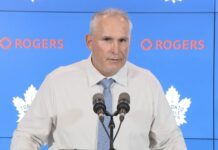

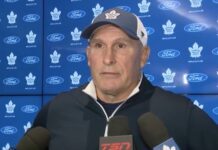
![Craig Berube on Nick Robertson joining William Nylander’s line: “If he gets to a good area on the ice, [Nylander] can find him… He has to put a couple in and get some confidence” Craig Berube, Toronto Maple Leafs head coach](https://mapleleafshotstove.com/wp-content/uploads/2024/10/berube-leafs-prac-218x150.jpg)

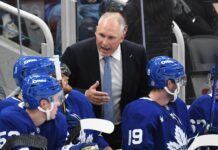

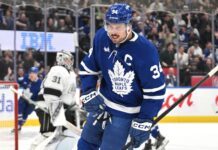
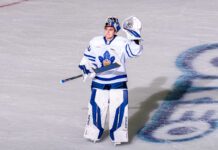
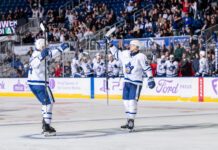

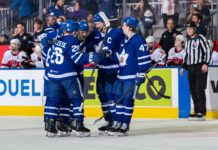









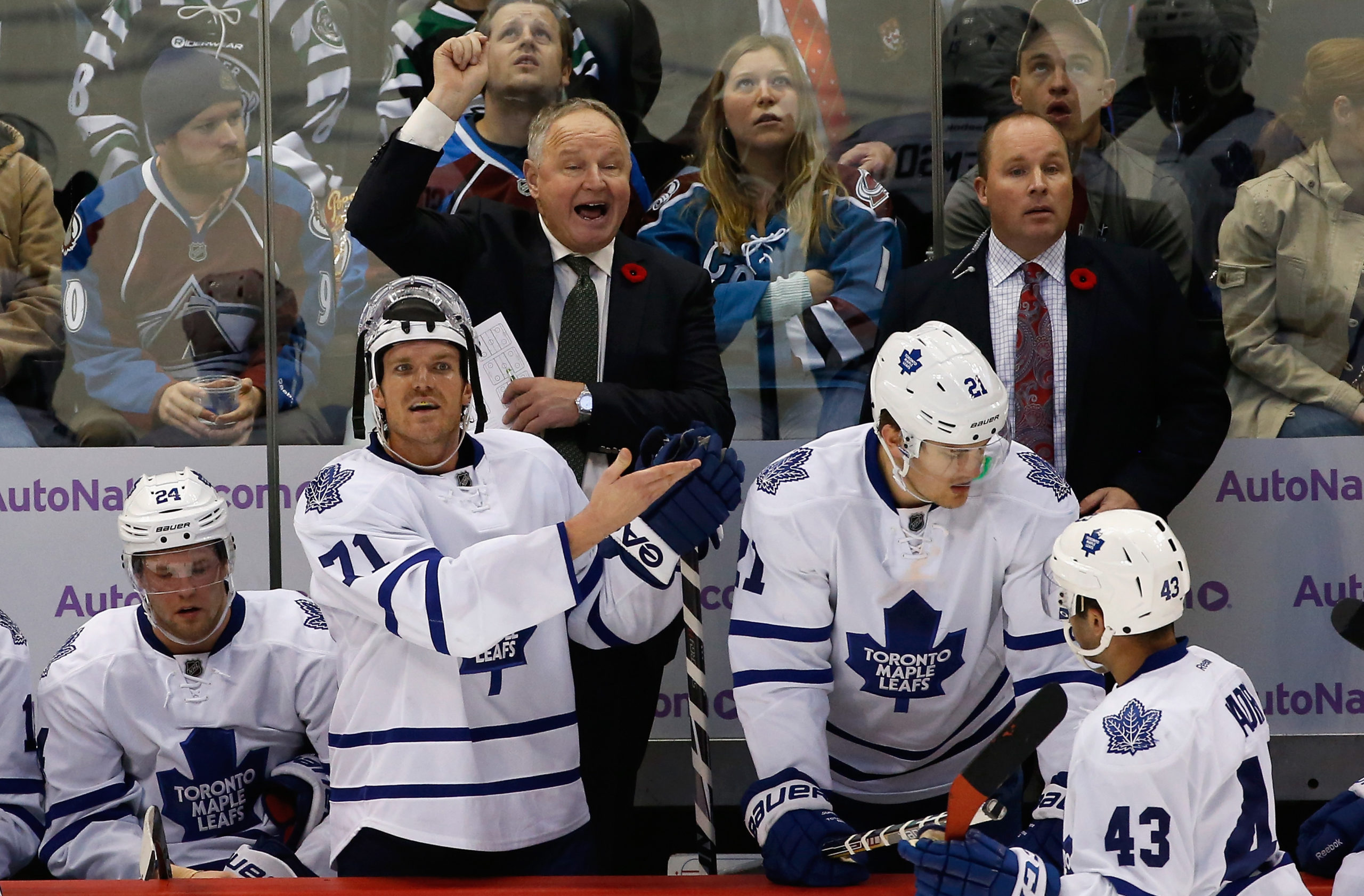
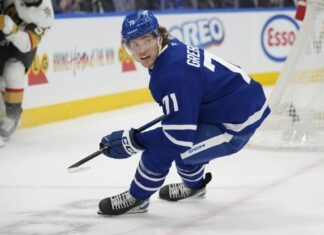




![Craig Berube on Nick Robertson joining William Nylander’s line: “If he gets to a good area on the ice, [Nylander] can find him… He has to put a couple in and get some confidence” Craig Berube, Toronto Maple Leafs head coach](https://mapleleafshotstove.com/wp-content/uploads/2024/10/berube-leafs-prac-100x70.jpg)



